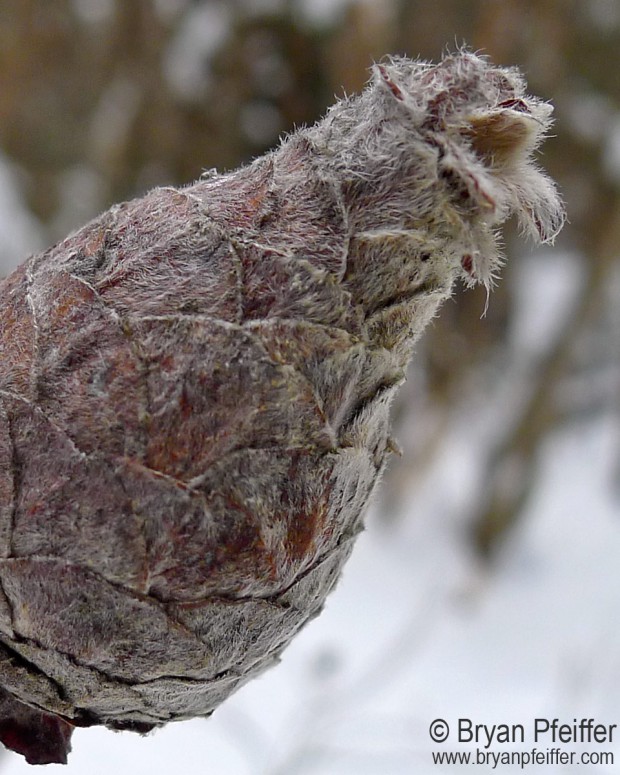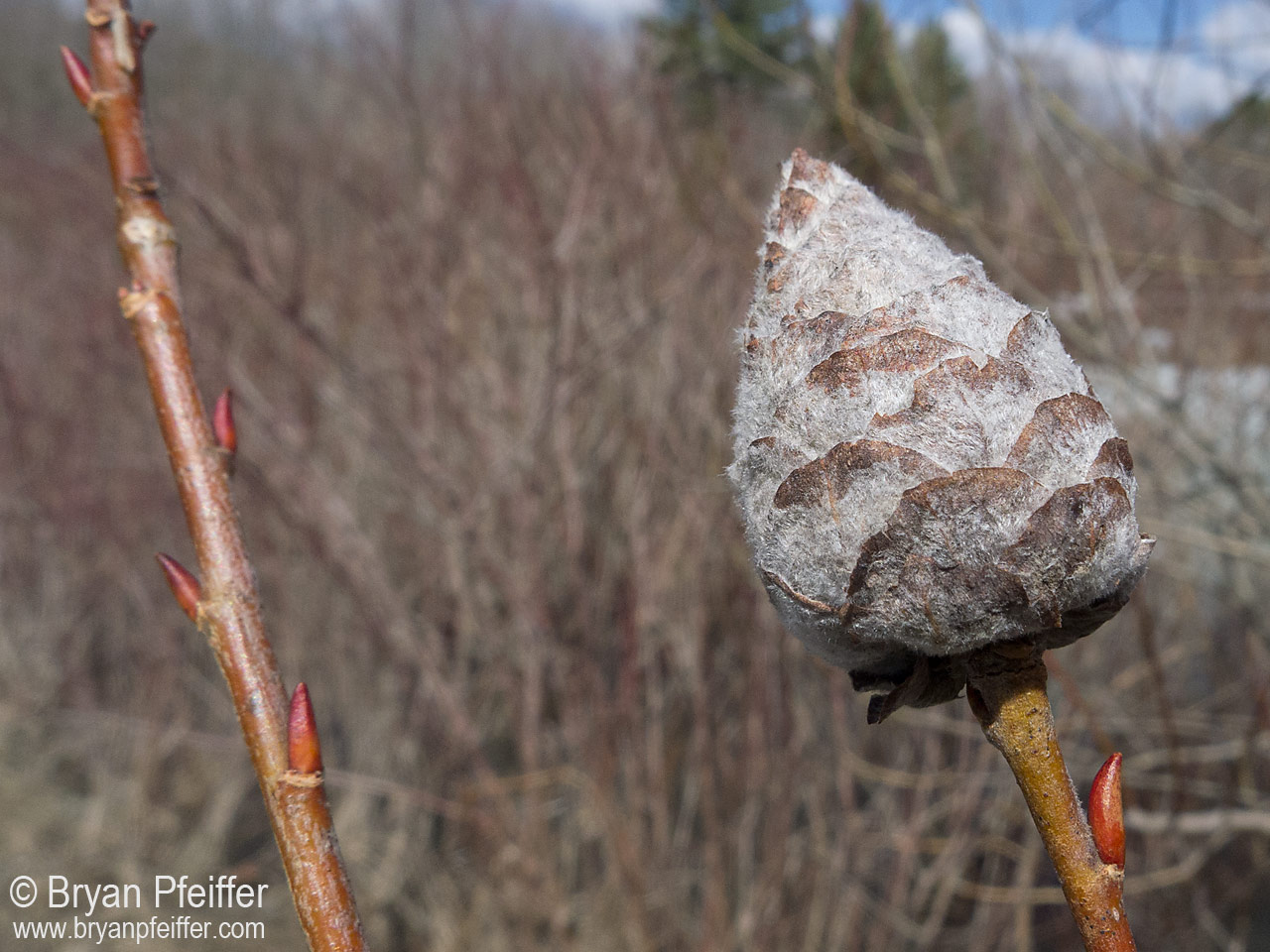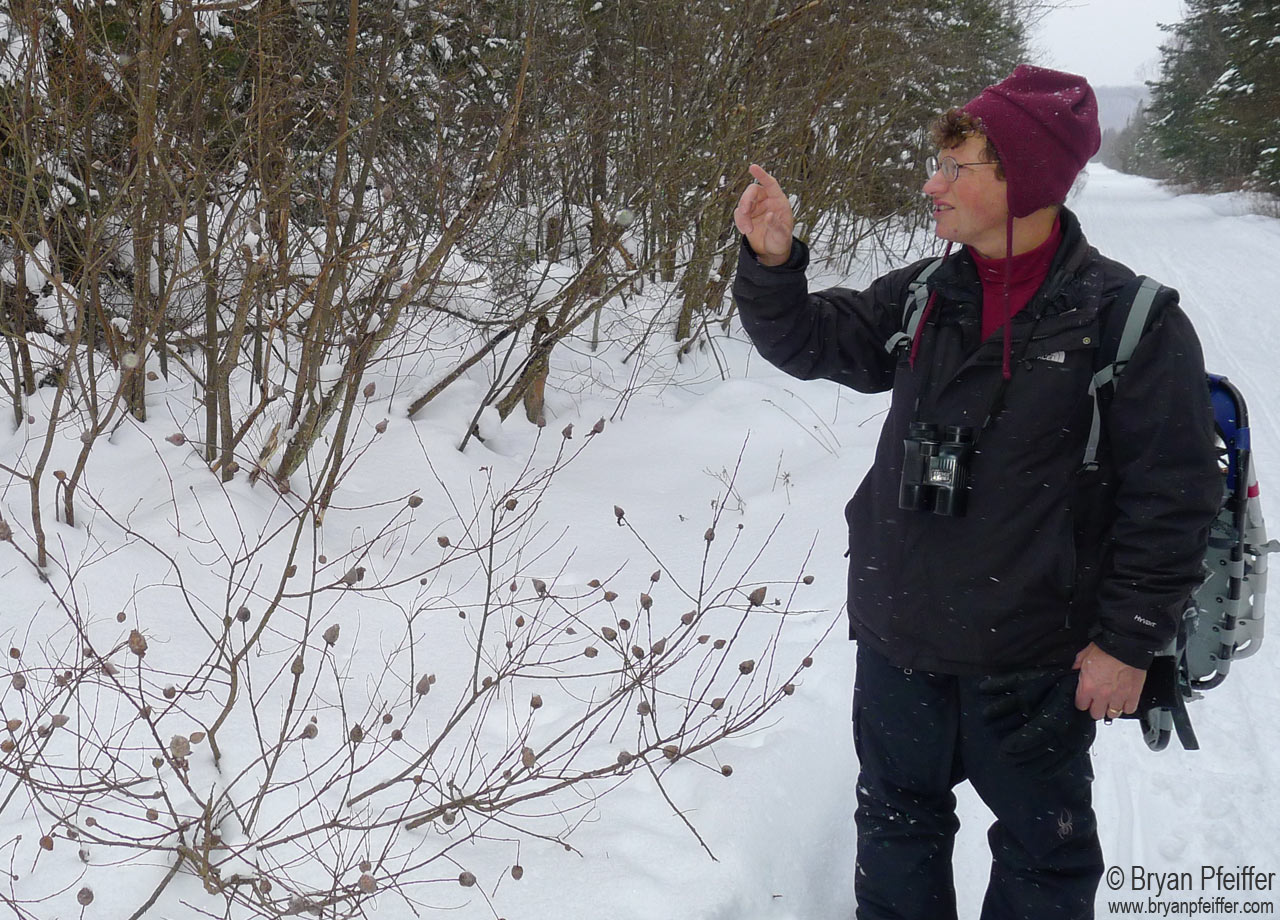What’s This? No. 23
 ANOTHER CRISPY BROWN THING is your latest What’s This? nature challenge.
ANOTHER CRISPY BROWN THING is your latest What’s This? nature challenge.
I shot this one on February 13, 2011, in Vermont’s Groton State Forest (near the old rail village of Lanesboro).
Name it and be eligible to win $5 off any of my outings or workshops. Submit your answer in the comments section below. From among the correct answers, I’ll choose a winner at random, and will tell all on Sunday, February 1, during the Super Bowl.
Added February 1, 2015: Nope, it’s not a cone from pine, spruce, fir, hemlock or tamarack. It’s not a conifer cone at all. This thing grows on willows, and only with the help of a tiny fly, a midge, called Rhabdophaga strobiloides. (Sorry, I don’t believe the fly has a common name other than perhaps the Willow Gall-midge, but strobiloides comes from the Greek strobus, or cone.)
Our winner, selected at random from all the correct answers (14 of them), is Erika Mitchell, who named this thing as a willow pine gall. I’ve included all the correct responses below, including, as is customary, Sara Backer’s honorable mention for boundless (sometimes zany) creativity. I do sometimes wonder about my dear Sara, who writes:
Seriously, Bryan, you should think twice before diving deep into the Vermont Groton State Forest dumpster. This Hawaiian Blood Asparagus is a tasty pizza topping indigenous to Kauai when the tip is fresh and bright green. You photographed it, however, in a state of deliquescence which renders it inedible. In this phase, folklorists claim its juice will kill toenail fungus. But if even a trace of it is rubbed into your eyes, nostrils, or lips, you will experience spontaneous bleeding (thus, its name). I hope you wore gloves!
So, despite Sara’s plausible explanation, Rhabdophaga, this tiny midge about the size of a mosquito, makes a big deal on a willow. In spring female midges fly around and lay their eggs at the tip of willow twigs. As the larva (maggot) begins to feed, it probably secrets a chemical that tricks the willow into rapid growth of scale-like tissue (instead of leaves) that surrounds the insect in a pattern that happens to resemble a conifer cone. So our midge, a parasite, manipulates the plant’s growth pattern for its own benefit. Inside its gall, the larva (and eventually the pupa) remains safe from most predators over the winter. Some gall it’s got.
By spring, from the pupa the adult midge emerges, works it way out of the “cone” and flies free to mate, probably living on average just a few days, to start the cycle again. The willows, a waystation for the insect, seems no less for wear after the whole affair.
Below are a few more images. Also check out Kent McFarland’s post on willow pine galls. And find all my What’s This? nature challenges here.

A Willow Pine Gall and twigs recognizable to many as willows (with those “naked leaf buds” lacking protective scale coverings.


It looks a lot like a milkweed pod but I don’t think they’re as furry. And they’re longer.
So…what else is has a scaly seed-pod?Or, is it not a seed-pod, but a GALL?
Could it be a willow-gall?
At any rate, what fun to think about on a January day!
This looks like a willow pine cone gall on a willow tree.
No. 23 is a Willow Pine Cone Gall
Willow tree gall
I believe that this is a Pine Cone Willow Gall, created on willow twigs by the midge Rabdophaga strobiloides.
Looks like a willow gall – from a midge (can’t recall which one).
Looks like a willow cone gall to me.
Pine cone gall on willow?
willow gall
This looks to be a Pinecone Willow Gall
Seriously, Bryan, you should think twice before diving deep into the Vermont Groton State Forest dumpster. This Hawaiian Blood Asparagus is a tasty pizza topping indigenous to Kauai when the tip is fresh and bright green. You photographed it, however, in a state of deliquescence which renders it inedible. In this phase, folklorists claim its juice will kill toenail fungus. But if even a trace of it is rubbed into your eyes, nostrils, or lips, you will experience spontaneous bleeding (thus, its name). I hope you wore gloves!
Willow Gall
Looks like a pine cone willow gall. Maybe.
gall on a willow???